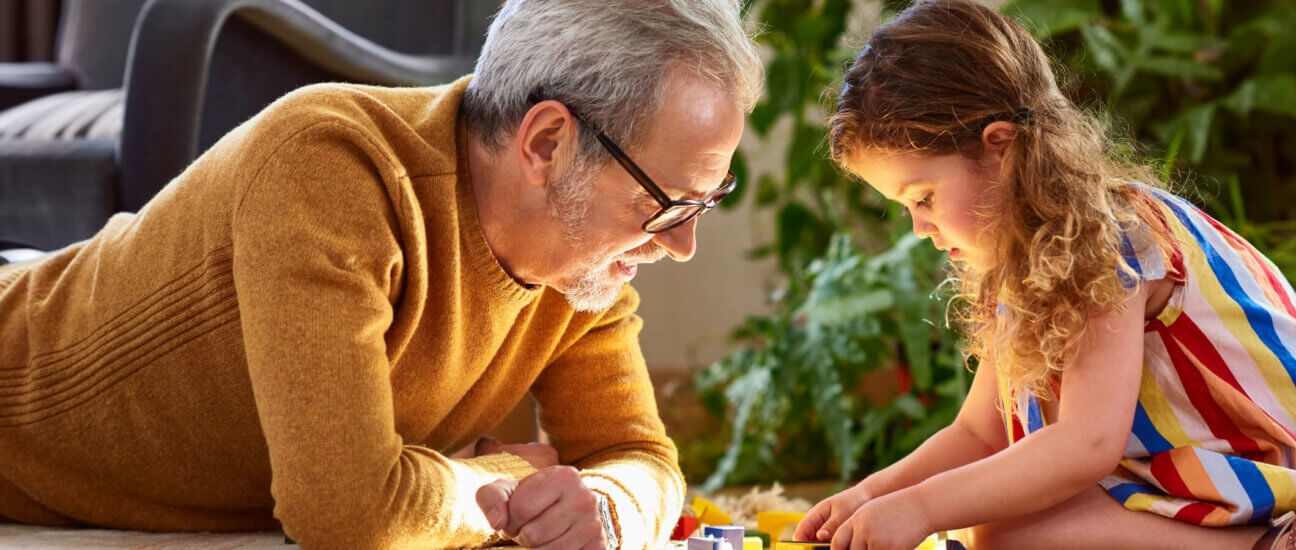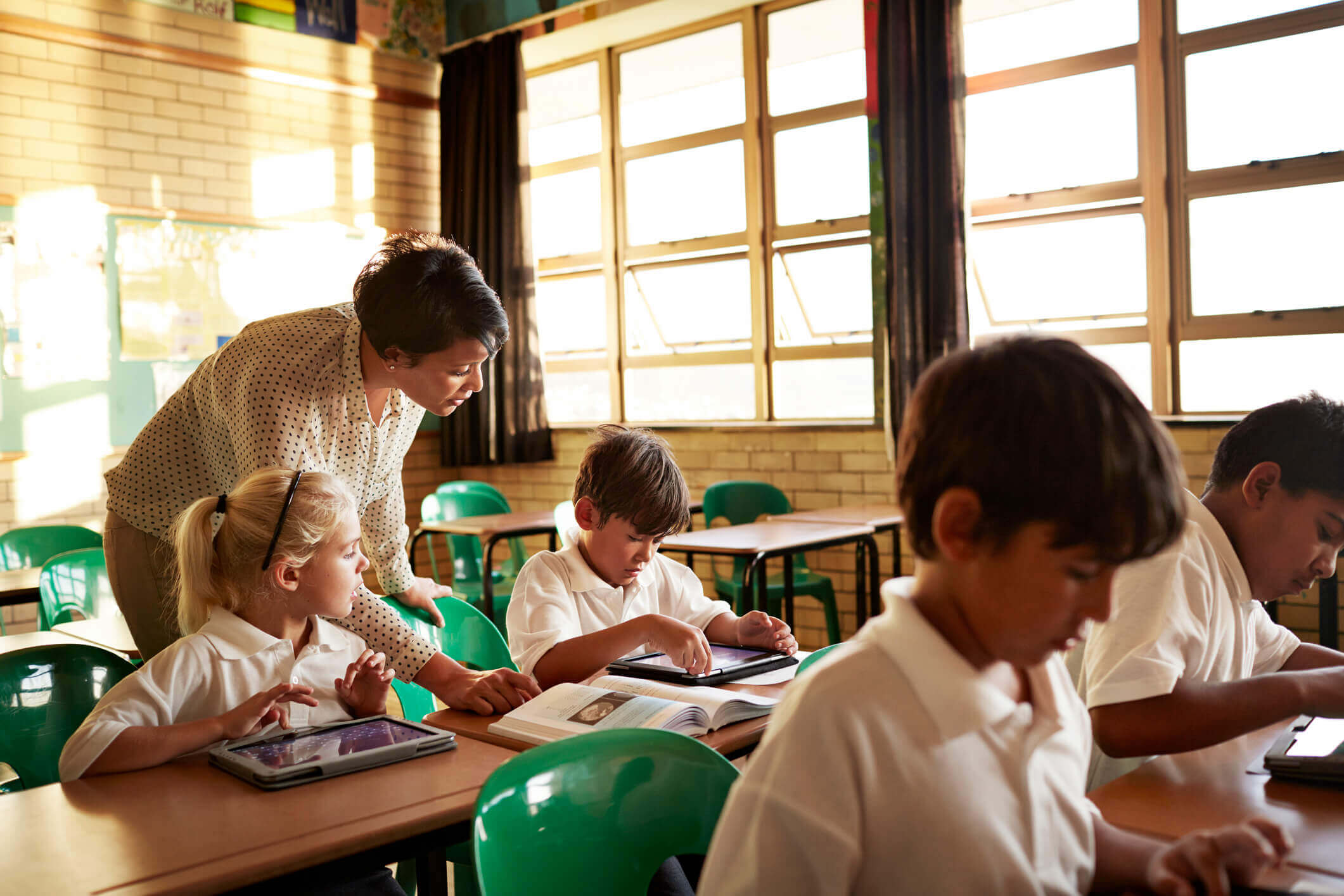Published on January 9th, 2024
The Ultimate Guide to Play-Based Learning
12 minute read

Children develop quickly in their early years, and their experiences between birth and age five significantly impact their future education, so it’s crucial to nurture their interests and passion for learning.
One way of helping kids adjust is through guided play, in which learning experiences combine with child-initiated play. This is also known as play-based learning, which allows children to explore learning in their own way.
The play-based learning approach also aids children’s social, emotional and physical development as they interact and build relationships with their classmates, grow into their bodies and start understanding the world around them.
Transitioning from nursery to school can also be challenging, with some children finding the formal setting of a primary school classroom daunting. To alleviate these pressures, helping children learn through free play and play-based activities can bridge the gap between nursery and school.
In this guide, we explore play-based learning in more detail to help you understand its benefits, and we offer ways to incorporate compelling play-based learning experiences into your classroom.
What is play-based learning?
Play-based learning is an overarching term encompassing several teaching techniques and approaches that help kids develop knowledge and skills by participating in play-based games and tasks.
These learning activities are not restricted to the classroom. The physical learning environment can be anywhere, indoors, outdoors, or at the student’s home.
What are the benefits of play-based learning?
Playing is a crucial part of child development, from helping improve kids’ gross motor skills (movements like running, sitting and jumping) and fine motor skills (activities like writing, waving and cutting with scissors) to benefitting social and language development.
More specifically, play-based learning has these key advantages:
Nurturing positive attitudes to learning
Play-based activities and tasks help to expose children to new concepts and ideas while fostering a positive attitude to learning, as kids associate it with having fun. This is key for helping children develop into curious and engaged learners.
Building confidence
Playing is vital for building kids’ confidence as it encourages children to socialise and develop relationships, empowering kids by providing them with a safe place to make their own choices. Likewise, when a child tries something new during supervised play time, it widens their comfort zones and allows them to take risks in a safe environment.
Encouraging social interaction
As children play, they learn to communicate and cooperate effectively with their friends. Additionally, play-based learning (and playing in general) helps children regulate and express their emotions, build empathy and compassion, and teaches them about conflict resolution as they cooperate and learn to share with their peers.
Appealing to different learning styles
As we explore below, play-based learning takes several forms, all of which can help students engage actively with themes and concepts. Although they may not have established a particular learning style at a young age, certain activities can help children develop their preferences. Role-playing and exploratory games, for example, can help kinaesthetic learners engage with content.
Developing essential life skills
Building life skills and laying the foundation for the future is a crucial part of the early years of education. Play-based learning contributes to this by helping kids develop key traits they’ll rely on throughout their lives, including problem-solving skills, creative thinking, resilience, and building relationships.
If you want to help your students prepare for life outside the classroom, our ‘Life skills for children: how to teach transferable skills in the classroom‘ guide is a must-read.
What are the different types of play-based learning?
Play-based learning encompasses a variety of different activities and forms, including the following:
Role play games
Encouraging your students to use props and act out real situations, like going to the supermarket or the doctor, enables children to hone their language and communication skills amongst their peers and explore the world around them.
Pretend play also allows children to develop their own interests as they decide who they want to impersonate based on their preferences.
Exploratory play
This playful learning forces children to use all of their senses and aids cognitive development. Exploratory play helps children understand and engage with the world around them, whether playing in a sandpit or embarking on a nature walk.
Physical play
As the name suggests, this form of play-based learning is about getting active and helping to nurture gross motor skills. It includes running around and playing with outdoor equipment like footballs and hula hoops.
Imaginative play
This play-based approach enables children to use their imaginations to create stories and scenarios.
Imaginative play lets children explore new thoughts, feelings and concepts, enhancing cognitive skills and character.
This type of play also interlinks with role-playing, as children may pretend to have various jobs, from working in shops to being astronauts.
Small world play
Using figures and toys, like dolls and farm animals, kids can display active learning and imitation and express their knowledge of the world creatively.
By encouraging children to engage in these types of activities, you are giving them the tools to control their learning and express their thoughts and feelings as they consolidate their understanding of concepts and theories.
Sensory play
Stimulating the senses – touch, sight, hearing, smell and taste – helps children understand and interact with their environment. Sensory play can benefit language development as students attempt to describe what they touch or smell.
Sensory play typically includes water or sand and can support kids’ cognitive, fine and gross motor development as they concentrate and focus on the activity.
How to incorporate play-based learning in your setting
Your play-based learning environment should feature plenty of child-led play activities, like areas to play with dolls and toys and engage in role-play, like a pretend restaurant or workshop.
During free time, like lunch breaks, you should encourage children to continue learning through physical and exploratory play.
To ensure success, you must first define your goals for play-based learning and the learning outcomes you want to achieve. This will help you identify the play ‘areas’ you want your classroom to include. One example of this may be wanting children to engage with nature. To do this, you could:
- Place plants around the room and ask children to look after and water them, teaching them the importance of caring for plants.
- Display posters of animals to encourage imaginative play.
- Create a pretend garden centre for children to role-play in.
- Going on nature walks around the school grounds will encourage kids to engage in exploratory and sensory play.
- Build a small farm yard display where children can participate in small-world play with toy animals.
- Introduce a sand or water tray for children to use and create sensory experiences.
Assessment and play-based learning
During the early years foundation stage (EYFS), between ages 0 and 5, the level of development children are expected to reach is defined by early learning goals (ELGs).
The DfE’s ‘Statutory Framework for the Early Years Foundation Stage’ clarifies that these ELGs should not be used as a curriculum but as a tool to support teachers in making holistic, best-fit judgements about a child’s development.
ELGs cover the following areas:
- Communication and language: listening, attention and understanding, and speaking.
- Personal, social and emotional development: self-regulation, managing self and building relationships.
- Physical development: gross motor skills and fine motor skills.
- Literacy: comprehension, word reading and writing.
- Mathematics: numbers and numerical patterns.
- Understanding the world: past and present, people, culture and communities, and the natural world.
- Expressive art and design: creating with materials and being imaginative and expressive
Clear links can be made between the aforementioned benefits of play-based learning and satisfying the ELGs above, especially those relating to communicating and personal, social, emotional, and physical development.
Further to this, the Statutory framework for the EYFS states:
“Play is essential for children’s development, building their confidence as they learn to explore, relate to others, set their own goals and solve problems.”
With this in mind, it is vital that play-based learning becomes a cornerstone of the activities and teaching methods used when working with EYFS students. This includes implementing various techniques, including encouraging children to lead their own play and participating in play guided by adults.
Enhance your classroom with Promethean
Discover the Promethean blog for more guidance and tips on maximising your classroom space. Here, you’ll find information on how to engage EAL students, appealing to different learning profiles in the classroom, and more.
One of the most valuable tools for teachers to engage students of all ages is an interactive display, like the Promethean ActivPanel 9. From creating visually stunning presentations to showing videos in crystal-clear 4K and using the touch-screen interface to play educational games, Promethean enhances students’ overall learning experience.
Request a demo to learn more about how Promethean can take your lessons to the next level.
FAQs
Is play-based learning effective?
Learning through play helps students in their early childhood to develop critical skills they’ll use throughout their lives, including cognitive, social and physical skills.
As noted by the Education Endowment Fund, the evidence for play-based learning could be stronger and more consistent, but it does indicate a clear relationship between play and early learning outcomes.
Play-based learning has positively affected a range of early learning outcomes. It can have substantial benefits for children who are identified as having social, emotional or educational difficulties.




